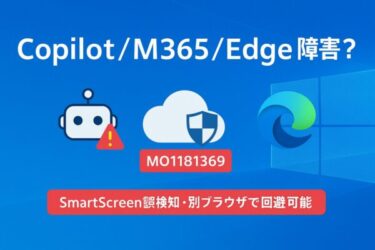You don’t need to touch the command line. Everything below is click-only, written for Ubuntu, Linux Mint, and Zorin OS.

- 1 Who this is for
- 2 Quick “try this first” checklist
- 3 1) Wi-Fi not showing or won’t connect
- 4 2) Can’t type correctly / keyboard layout issues
- 5 3) No sound / wrong speaker selected
- 6 4) USB flash drives / external HDD won’t open
- 7 5) Bluetooth mouse/keyboard stutters or won’t pair
- 8 6) External display issues (HDMI/USB-C)
- 9 7) Dual-boot: Linux won’t start / Windows always boots
- 10 8) Time is wrong after rebooting into Windows
- 11 9) Updates & drivers (without the Terminal)
- 12 Troubleshooting quick table (print-friendly)
- 13 Keep calm: 90% of fixes are just clicks + a restart
Who this is for
- Windows users trying Linux for the first time (or dual-booting)
- People who just want their Wi-Fi, sound, and USB drives to work—without learning commands
- Anyone who likes clear, step-by-step fixes with plain language
Quick “try this first” checklist
- Restart the PC (Linux re-detects hardware on boot).
- Check physical toggles (Wi-Fi/Fn key, airplane mode).
- Try another port/cable (USB/HDMI).
- Unplug Bluetooth devices, then reconnect.
- Update via “Software Updater” (no terminal).
1) Wi-Fi not showing or won’t connect
Step-by-step (GUI only)
- Click the network/Wi-Fi icon (top-right or bottom-right).
- Open Settings → Network → Wi-Fi and make sure Wi-Fi is On.
- Wait a few seconds; your SSID (network name) should appear.
- Select the SSID → Enter your Wi-Fi password → Connect.
- If you see “No Wi-Fi Adapter Found”:
- Temporarily connect with Ethernet (a cable) and restart.
- Many adapters get detected after a first update + reboot.
Pro tips
- Check airplane mode isn’t enabled.
- Some laptops have a Fn+F2-style Wi-Fi toggle—enable it.
- If only your network fails, reboot the router and try a phone hotspot to rule out router issues.
Optional (advanced): If the adapter still won’t appear after a cabled update + reboot, your model may need a vendor driver. (That’s for the “advanced/command” post.)
2) Can’t type correctly / keyboard layout issues
Even in English-only setups this crops up after first boot.
Fix layout / input method
- Open Settings → Keyboard (or Region & Language).
- Under Input Sources, click + Add and select the layout you actually use (e.g., English (US), English (UK)).
- Remove the wrong one (select it → – Remove).
- Test typing in a text editor.
Toggle tip: If you added more than one layout, use the panel icon (usually “EN”) or Super+Space to switch.
3) No sound / wrong speaker selected
Pick the right output device
- Open Settings → Sound.
- Under Output, click each option in turn:
- Speakers (Internal Audio)
- HDMI / DisplayPort (if you plugged a monitor/TV)
- Your Bluetooth headset
- Unmute and raise volume.
- If you use HDMI, some monitors claim audio by default—switch back to Speakers if you want the laptop audio.
Bluetooth audio won’t connect or cuts out
- Go to Settings → Bluetooth.
- Remove (forget) the headset → Pair it again.
- For multi-device headsets, make sure they’re not still connected to your phone/another PC.
Optional (advanced): If output options look wrong after pairing, installing a simple mixer like PulseAudio Volume Control helps—but keep that for the advanced guide.
4) USB flash drives / external HDD won’t open
Make it appear in the file manager
- Re-insert the drive and wait 5–10 seconds.
- Open Files (file manager) → look at the left sidebar for “USB Drive” or the drive’s label. Click to open.
- If nothing appears, try a different USB port or a different cable (for HDDs).
- Still nothing? Restart, then check again in Files.
Good to know
- Modern Ubuntu/Mint/Zorin read NTFS and exFAT out of the box.
- If Windows shut down with Fast Startup or hibernation, Linux may refuse to mount the drive. Fully shut down Windows (disable Fast Startup) and try again.
Safely remove: In Files, right-click the drive → Eject before unplugging.
5) Bluetooth mouse/keyboard stutters or won’t pair
- Remove the device from Settings → Bluetooth.
- Put the device into pairing mode (hold the button until LED blinks).
- Pair again from the list; confirm/enter the code if prompted.
- If it still lags, move USB 3.0 drives away from the Bluetooth dongle (they can interfere).
- For desktops, a USB extension to bring the dongle closer to the mouse/keyboard helps a lot.
6) External display issues (HDMI/USB-C)
- Plug the cable firmly on both ends; try a different port/cable.
- Open Settings → Displays.
- Click Detect Displays.
- Choose Mirror or Join Displays, set the resolution/refresh rate, and Apply.
- If audio follows the monitor but you want laptop speakers, go back to Settings → Sound → Output and choose Speakers (Internal).
7) Dual-boot: Linux won’t start / Windows always boots
When both are installed, Windows updates can sometimes jump to the top of the boot order.
Fix the boot order (no commands)
- Reboot and tap your PC’s BIOS/UEFI key (often F2, F10, Del, or Esc).
- Open Boot / Startup settings.
- Put ubuntu (or “Linux/GRUB”) above “Windows Boot Manager”.
- Save & Exit (usually F10).
- On next boot, you should see the Linux menu (GRUB) letting you choose Linux or Windows.
Tip: If you don’t see Linux at all, boot your USB install media, choose Try Ubuntu, and use its recovery tools to repair the bootloader (that’s still GUI-driven).
8) Time is wrong after rebooting into Windows
Linux uses UTC internally; Windows uses local time by default. That mismatch causes clock drift in dual-boot.
Easiest workaround
- In Windows, open Date & Time → Set time automatically ON → Sync now.
- In Linux, open Settings → Date & Time → Automatic Date & Time ON.
- If the issue persists, pick one OS to be the “time boss” and always sync after switching.
(There’s an advanced fix to make Windows use UTC, or Linux use local time; we keep it GUI-only here.)
9) Updates & drivers (without the Terminal)
You can keep everything healthy by using built-in applets:
- Software Updater (Ubuntu/Mint): runs automatically; you can also launch it from the app menu.
- Driver Manager (Mint/Zorin): auto-detects proprietary drivers (graphics/Wi-Fi). Open it, let it scan, and apply recommended drivers.
- Additional Drivers (Ubuntu, under Software & Updates): similar flow—select the recommended option and Apply Changes.
Rule of thumb: Install the recommended driver → Restart.
Troubleshooting quick table (print-friendly)
| Problem | What to click (GUI) | If it still fails |
|---|---|---|
| Wi-Fi missing | Settings → Network → Wi-Fi → On → Select SSID | Reboot; plug Ethernet once; check Fn Wi-Fi key |
| Wrong keyboard | Settings → Keyboard/Region & Language → Add correct layout | Remove wrong layout; toggle with Super+Space |
| No sound | Settings → Sound → Output → pick Speakers/HDMI/Bluetooth | Unpair/re-pair Bluetooth; switch HDMI back to Speakers |
| USB won’t open | Re-insert → Files (left sidebar) → click the drive | Try another port/cable; fully shut down Windows first |
| Bluetooth lag | Remove device → re-pair; use USB extension | Keep USB 3.0 drives away from BT dongle |
| External display | Settings → Displays → Detect → set resolution | Try another cable/port; switch audio output |
| Linux won’t boot | BIOS/UEFI → put “ubuntu/GRUB” first | Boot from USB “Try Ubuntu” and run repair tools |
| Time drift | Auto time ON in both OS | Sync after switching; pick one OS to “own” time |
Keep calm: 90% of fixes are just clicks + a restart
Modern Linux desktops are far more forgiving than they used to be. If you can open Settings, you can fix most first-day problems.
When you’re ready to dig deeper, you can jump to the advanced/command edition for power-user tricks.
[PR] Beginner essentials that make Linux fixes faster
*Links use Amazon Associates (US: kimiyoyaus-20, DE/JP: kimiyoyade-21).*
💡 Looking for more tips? Check out our full list of Windows Help Guides.


